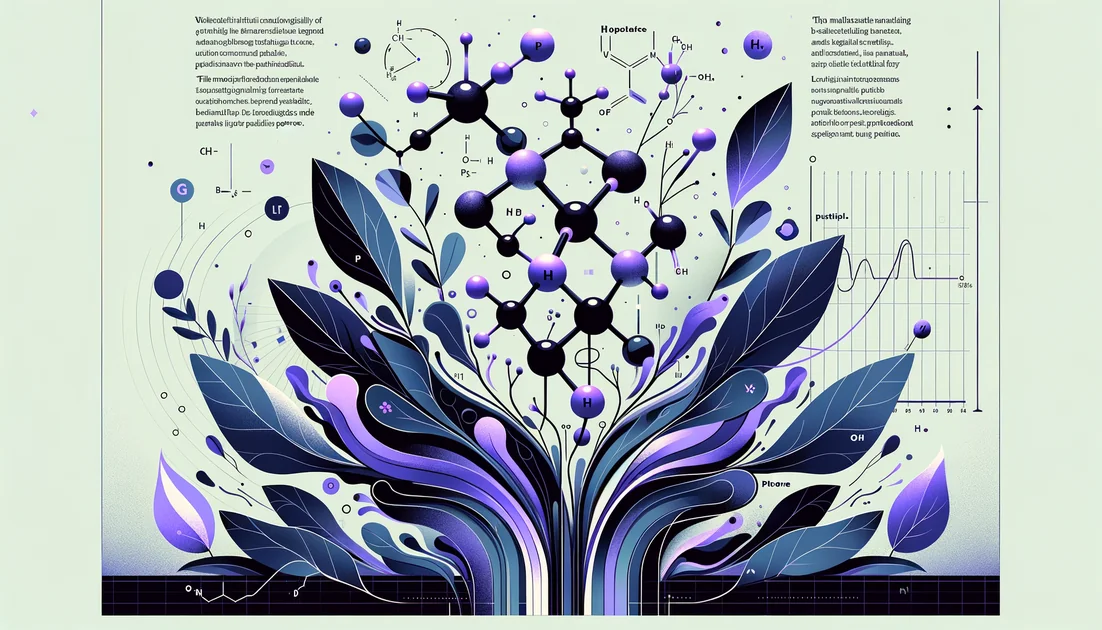
The Tingle and the Timeline: How Beta-Alanine Turns Patience into Power
You swallow the scoop and, within minutes, your skin prickles. The odd thing about beta-alanine is that you can feel it today—but its real work shows up weeks from now.
- Evidence
- Robust
- Immediate Effect
- No → 4–10 weeks
- Wears Off
- 12–16 weeks after stopping
The sensation vs. the science
That pinprick-tingle (paresthesia) isn't your muscles getting stronger; it's your skin's sensory nerves lighting up. Beta-alanine can briefly flip on an itch-receptor called MrgprD—think of it as a doorbell on the nerves that live in your skin—so you notice a harmless buzz while nothing performance-enhancing has happened yet. The performance part begins later, after daily doses quietly stock your muscles with more carnosine, a tiny molecule that soaks up acid when exercise turns the burn up to eleven. Over time, you're not changing effort—you're changing how long your effort lasts before the burn wins. [11][2]
"Four weeks of beta-alanine (4–6 g daily) significantly augments muscle carnosine," concluded the International Society of Sports Nutrition. [2]
A century-old clue hiding in meat
Carnosine wasn't discovered in a supplement factory; it was pulled from meat in 1900 by biochemist Vladimir Gulevich. A century later, sports scientists connected that old molecule to a modern problem: during all-out efforts, hydrogen ions flood your muscle and lower pH—the burn that forces you to slow. Carnosine acts like a sponge for those ions. People who eat little or no meat often carry less carnosine in muscle; omnivores tend to carry more. Beta-alanine—half of carnosine's two-part structure—is the key ingredient muscles run short on, so supplementing it lets your cells build more of the buffer. [6][12][7]
The turning point: when a hunch met muscle biopsies
In the mid-2000s, Roger Harris and colleagues asked a simple question: what if we raise the supply of beta-alanine and watch what happens inside muscle? Biopsies told the story. Four to ten weeks of supplementation pushed muscle carnosine up roughly 40–80%, and cyclists could do more work before quitting at brutal intensities. It was the physiological equivalent of widening a bathtub drain—you can pour on effort longer before it overflows. [1]
"Pioneering work by Prof. Roger Harris.. demonstrated that augmenting intra-cellular buffering was possible via chronic beta-alanine," notes sports scientist Trent Stellingwerff. [10]
Real people, real tasks
In an elite combat unit, four weeks of beta-alanine didn't make soldiers better at seated math, but it did make them faster to engage targets and steadier with their shots—skills that live in the red zone between calm and chaos. [8]
During a grueling 24-hour simulated operation with sleep loss, supplemented troops kept reaction time from slipping and held pace better on a 1-km run when everyone was fried. [9]
In older adults, 90 days of supplementation lifted the "fatigue threshold"—the point where muscles start to give in—by nearly a third, hinting at resilience gains that matter for stairs, carries, and independence. [16]
In patients with COPD, carnosine soared but cycling capacity did not, a useful reminder: raising the buffer is necessary, not always sufficient, when disease or other bottlenecks limit performance. [17]
What the weight of evidence says
Meta-analyses and a formal position stand converge on a clear pattern: beta-alanine helps most when the effort is cruelly hard and lasts minutes, not seconds or hours. The ISSN highlights improvements in tasks around 1–4 minutes; a 2024 systematic review in trained men also finds benefits in maximal efforts lasting 4–10 minutes, with typical doses of ~5.6–6.4 g/day over four weeks. [2][3]
"Supplementation is likely to be most beneficial for athletes in high-intensity sports lasting from 4 to 10 minutes," the 2024 review reports. [3]
Not every race or workout lives there, so effects vary: a 2,000-m rowing study saw split-second wins in the middle of the piece but an inconclusive change in total time. That's consistent with the idea that beta-alanine shines where acid build-up is the limiter, not pacing or oxygen delivery. [14]
How to tingles into results
Think loading, not a pre-workout "hit." Daily 4–6 g in small servings for at least four weeks is the evidence-based on-ramp. [2]
Take it with meals. Co-ingesting with food seems to help muscle hold onto what you take—picture insulin opening more loading docks so beta-alanine gets inside. [5]
After you're loaded, maintenance can be modest. Around 1.2 g/day helps keep carnosine elevated. [6]
Expect a long fuse and a slow fade. Carnosine builds over weeks and, once elevated, drifts back toward baseline over about 12–16 weeks if you stop. [4]
The small surprises
The feel-now/work-later paradox: the tingles are immediate and caused by skin nerve receptors, but the performance benefit is the quiet accrual of carnosine over time. [11]
Food culture echoes the lab: in Asia, concentrated chicken extracts rich in carnosine-like dipeptides have long been tonics; modern work shows why meat-derived dipeptides can nudge the same buffering system. [6]
Team-ups are being tested: pooling intracellular buffering (beta-alanine) with extracellular buffering (sodium bicarbonate) may offer small additive gains, though findings are mixed across studies and contexts. [15]
Safety and the art of dosing
The tingle is dose-related and usually fades within an hour. Sustained-release formulas or smaller, divided doses tame it. Early mechanistic work suggests beta-alanine and taurine share a transporter in muscle (seen in animals), but human trials at standard doses haven't shown meaningful safety concerns to date. Long-term (>1 year) data remain limited, so stick to studied dosing. [2][6][11]
If this is you, beta-alanine makes sense
You thrive in efforts that make your quads talk back: 400–1500 m on the track, 500–2000 m on the rower, mid-distance swimming, repeated grappling exchanges, CrossFit-style intervals, hard final laps or surges. Vegetarians or vegans, who tend to start with lower carnosine, may get a slightly bigger boost. Older lifters chasing endurance between sets—not just max strength—may notice less early fatigue. [2][12]
What's next
Researchers are following three threads: why some people load carnosine faster than others; whether pairing with training, meals, or novel slow-release powders can compress the loading timeline; and where, exactly, the ceiling is—how much carnosine is enough for your sport. [10][3][5]
In the end, beta-alanine is less a spark and more a reservoir. You don't feel endurance being stored, but weeks later—mid-interval, heart walloping, legs acidic—you notice something subtle: you're still going. [11]: Liu Q, et al. Mechanisms of itch evoked by β-alanine. J Neurosci. 2012. [2]: International Society of Sports Nutrition Position Stand: Beta-Alanine (2015). [6]: Boldyrev A, Aldini G, Derave W. Physiology and pathophysiology of carnosine. Physiol Rev. 2013. [12]: Harris RC, et al. Determinants of muscle carnosine content. Amino Acids. 2012. [1]: Hill CA, et al. Influence of β-alanine on muscle carnosine and high-intensity capacity. Amino Acids. 2007. [10]: Stellingwerff T. An update on beta-alanine for athletes. GSSI Sports Science Exchange. 2020. [8]: Hoffman JR, et al. β-Alanine improves tactical performance in soldiers. JISSN. 2014. [9]: Varanoske AN/Wells AJ/Hoffman JR, et al. 24-h simulated operation; Physiol Rep. 2018/2020. [16]: Stout JR, et al. Beta-alanine and neuromuscular fatigue in elderly. JISSN. 2008. [17]: De Brandt J, et al. COPD trial—carnosine up, no performance change. J Cachexia Sarcopenia Muscle. 2022. [3]: IJSNEM 2024 systematic review/meta-analysis in trained males. [14]: Bellinger PM, et al. 2000-m rowing ergometer study. 2013. [5]: Stegen S, et al. Meal co-ingestion enhances loading. Med Sci Sports Exerc. 2013. [4]: Rezende/Booster group: 12–16-wk carnosine washout kinetics. 2020. [15]: 2024 meta-analysis on combining beta-alanine with sodium bicarbonate.
Key takeaways
- •Mechanism: Beta-alanine raises muscle carnosine, buffering acid so you can sustain high effort longer before the burn wins.
- •Who benefits: Athletes in minutes-long, high-intensity efforts (e.g., rowing, mid-distance track, swimming, grappling, CrossFit); vegetarians/vegans and older adults may see added value.
- •Dosing: Load 4–6 g/day in divided servings (≤1.6–2 g each) for at least 4 weeks; consider sustained-release to blunt tingles; maintain around 1.2 g/day.
- •Timing: Treat it like filling a reservoir—take it daily, preferably with meals; pre-workout timing isn't required.
- •Expectations: Paresthesia is benign and dose-related; performance benefits cluster in ~1–4 (up to ~10) minute efforts, and carnosine washes out slowly over ~12–16 weeks if you stop.
You might also like
Explore more of our evidence-led investigations, comparisons, and guides across every article style.

Puritan's Pride
Puritan's Pride: Industry-grade manufacturing meets discount pricing—so why is transparency still the weak link?

L-Theanine vs GABA (gamma-aminobutyric acid)
For calm without sedation, choose L-theanine; it reliably shifts brain activity toward relaxed alertness and has better central access. GABA can feel calming for some but evidence is limited and it's more likely to sedate. [2][7][8]

Best for gut health
Psyllium husk – 5 g twice daily

L-Theanine
Picture a Zen monk whisking a bowl of tea at dawn. The ritual looks serene, yet what it delivers is not sleepiness—it's calm alertness, the paradox many of us crave in a noisy world. Scientists went hunting for the molecule behind that feeling and found L-theanine, tea's quiet signature.

Ashwagandha + Rhodiola: Calm Energy or Just Hype?
Dual-core, theoretical synergy: good rationale, solid solo data, but no head-to-head Ashwagandha+Rhodiola trials yet.

Tocotrienols
The stealthier cousins of vitamin E—built with springy tails that move differently in cell membranes and behave differently in your body.


